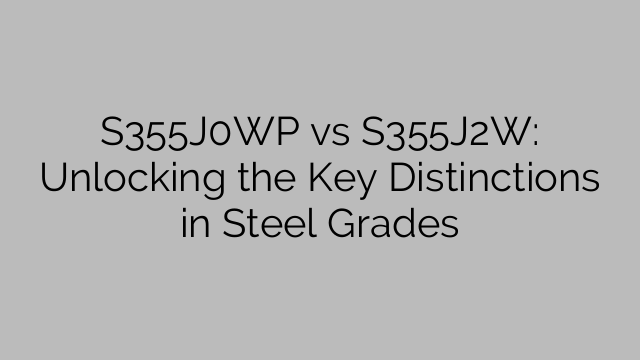When it comes to steel grades, there are numerous options available that cater to different applications and requirements. Among these grades, S355J0WP and S355J2W are two popular choices that are often compared due to their similarities and differences.
S355J0WP and S355J2W are both weathering steel grades that belong to the European standard EN 10025-5. Weathering steel, also known as corten steel, is a type of steel alloy that forms a protective layer of rust when exposed to outdoor conditions. This rust-like appearance not only adds aesthetic appeal but also provides the steel with enhanced corrosion resistance, making it suitable for construction, architectural, and outdoor applications.
One of the key distinctions between S355J0WP and S355J2W lies in their chemical composition. S355J0WP has a higher phosphorus content than S355J2W, which contributes to its superior weather resistance. Phosphorus acts as a weathering agent by facilitating the formation of the protective rust layer. Additionally, S355J2W contains a slightly higher amount of copper compared to S355J0WP. Copper also acts as a weathering agent and enhances the steel’s corrosion resistance.
In terms of mechanical properties, S355J0WP and S355J2W exhibit similar characteristics. Both grades possess a minimum yield strength of 355 N/mm², which provides them with excellent structural strength. They also have a minimum tensile strength of 470-630 N/mm², ensuring their ability to withstand significant loads without deformation.
The applications of S355J0WP and S355J2W largely overlap, but their distinct properties make them suitable for specific uses. S355J0WP is commonly employed in structures exposed to harsh weather conditions, such as bridges, facades, and chimneys. Its high phosphorus content makes it particularly effective in resisting atmospheric corrosion.
On the other hand, S355J2W is often preferred for architectural and structural applications. Its slightly higher copper content offers enhanced corrosion resistance, making it suitable for outdoor sculptures, architectural cladding, and outdoor constructions. Its availability in various shapes, such as plates, sheets, and bars, further makes it versatile for different requirements.
It is worth noting that both S355J0WP and S355J2W require no further treatment or protective coatings, thereby reducing maintenance costs and extending the lifespan of the structures. The naturally formed rust layer acts as a barrier, preventing the underlying steel from being exposed to corrosive elements.
In conclusion, while S355J0WP and S355J2W belong to the same European standard and share similar mechanical properties, their chemical compositions set them apart. The higher phosphorus content in S355J0WP enhances its weather resistance, while the added copper in S355J2W provides improved corrosion resistance. Understanding these key distinctions allows engineers and designers to choose the most appropriate grade for specific applications, ensuring optimal performance and longevity of the structures.

